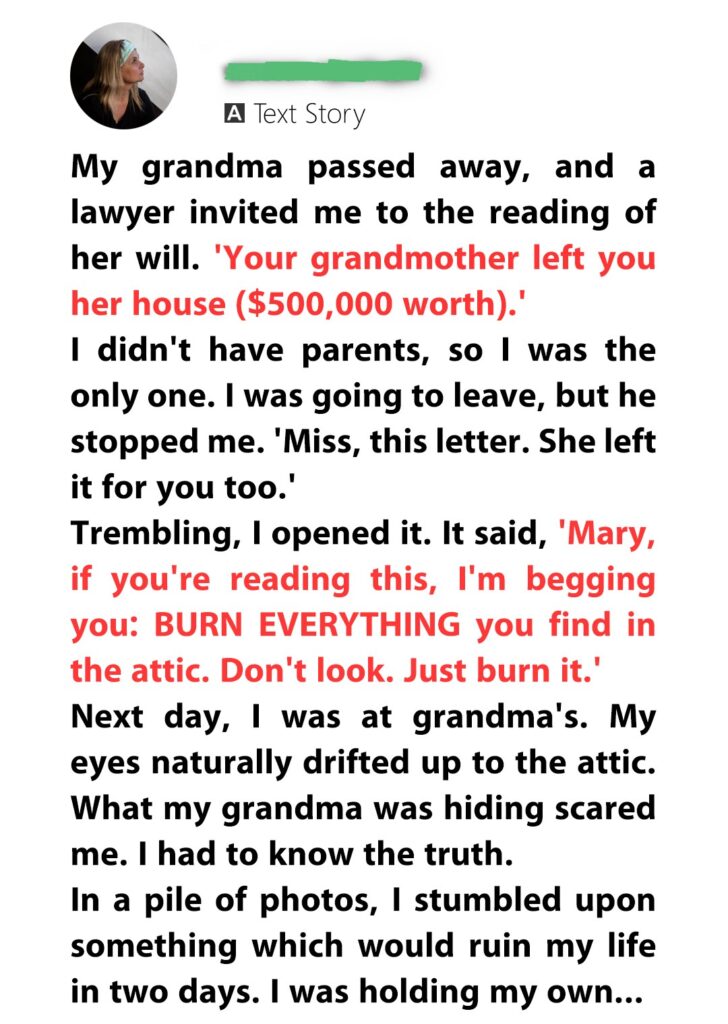When Marie’s grandmother Elinor passed away, she inherited the old family home—and a cryptic letter with one chilling instruction: “Burn everything you find in the attic. Don’t look. Don’t open. Just burn it.” But grief has a way of unraveling caution, and curiosity, even more so.
Marie ignored the warning.
The attic was thick with dust and silence, but it wasn’t empty. It held fragments of Elinor’s life: birthday cards drawn in crayon, broken clocks, faded photographs, and jars of buttons. It felt like stepping into memory itself. But beneath the nostalgia, Marie unearthed something darker—a locked box tucked behind insulation. Inside were letters, court documents, and photographs that revealed a family secret buried for decades.
Elinor had once been a young mother forced to give up her first child—Marie’s mother—under circumstances riddled with shame and coercion. The attic was a vault of pain, a place Elinor had sealed away to protect Marie from the weight of generational trauma. Her final wish wasn’t about destruction—it was about mercy.
Marie wept, not just for the loss of her grandmother, but for the truth she’d never known. The attic wasn’t just a room—it was a reckoning. And in defying the letter, Marie found not ruin, but understanding. She saw Elinor not just as a loving grandmother, but as a woman who had survived heartbreak, who had tried to shield her granddaughter from the same.
🔥 Meaning in the Ashes
The story is a haunting reminder that sometimes, love asks us to forget—but healing demands we remember. Elinor’s plea to burn the attic wasn’t a command to erase history, but a desperate attempt to spare Marie from its scars. Yet in uncovering the past, Marie gained something deeper: empathy, identity, and the courage to carry forward the truth.



